
Othonna euphorbioides Photo by: Sándor Horváth
Origin and Habitat: Northern Cape, central and northern Namqualand, South Africa. (from Steinkopf to Khamieskroon and further west)
Habitat: Grows in rather inaccessible solid granite rock domes squeezed into crevices in very exposed situations, specimens often existing on a thimbleful of soil as the sole inhabitants of microscopic horizontal fissures running along steep cliffs. One wondered how they ever obtained any moisture or other nutriment. In its local habitat, from May to August, when plants grow, the weather is cold, and temperatures sometimes dip below 0ºC.
Synonyms:
Common Names include:
AFRIKAANS (Afrikaans): Doringkers
Description: Othonna euphorbioidesSN|22204]]SN|22204]] is a remarkable caudiciforms species with the habit of a miniature spiny succulent shrub, broader than tall barely 10-15(-30) cm tall. It is the most cactus-like of all succulent Compositae (near Senecio) forming spiny masses of succulent stems seemingly remote from the better known Othonnas. This plant acquired its name by resembling many of the spiny succulent euphorbias.
Caudex: Potato-like with short sparse branches, covered with greyish powder.
Spines: Bears branched spines, that may fork or retain shrivelled floral remnants.
Leaves: In tufts at ends of branches borne amongst compact arrangements of spines, elongate-spatulate (spoon-shaped) 3-4 cm long, light green, covered with white pruinose powder.
Remarks: This plant is one of the few species that contend 'areoles' to cacti, other contenders for "pseudo-areoles" with more than two spines are Euphorbia dasyacantha and Euphorbia horrida.
Bibliography: Major references and further lecture
1) Urs Eggli “Illustrated Handbook of Succulent Plants: Dicotyledons” Volume 2. Springer, 2002
2) Gordon Rowley “Caudiciform and Pachycaul Succulents: Pachycauls, Bottle-,Barrel-And Elephant-Trees and Their Kin a Collector's Miscellany” Strawberry Press. June 1st 1987
3) Werner Rauh “The Wonderful World of Succulents: Cultivation and Description of Selected Succulent Plants Other Than Cacti” Smithsonian Institution Press, 1984
4) Clive Innes “Complete Handbook of Cacti and Succulents” Van Nostrand Reinhold Company, 01/dic/1981
5) Edgar Lamb “The illustrated reference on cacti and other succulents” Blandford Press, 1978
6) James Cullen, Sabina G. Knees, H. Suzanne Cubey “The European Garden Flora Flowering Plants: A Manual for the Identification of Plants Cultivated in Europe, Both Out-of-Doors and Under Glass” Cambridge University Press, 11/ago/2011
7) Hermann Jacobsen “A handbook of succulent plants: descriptions, synonyms, and cultural details for succulents other than Cactaceae” Volume 1 Blandford Press, 1960
8) Hermann Jacobsen “Lexicon of Succulent Plants” Littlehampton Book Services Ltd. 1975
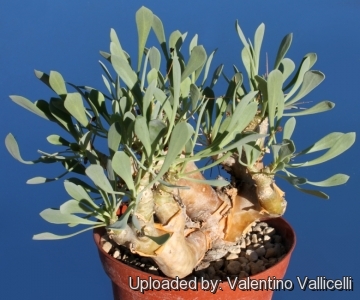 Othonna euphorbioides Photo by: Valentino Vallicelli
Othonna euphorbioides Photo by: Valentino Vallicelli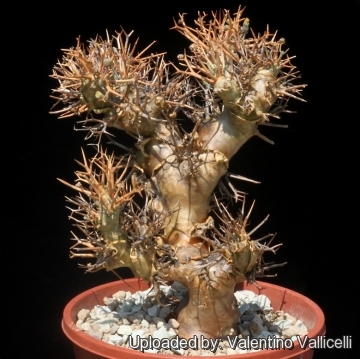 Othonna euphorbioides Photo by: Valentino Vallicelli
Othonna euphorbioides Photo by: Valentino Vallicelli Othonna euphorbioides in habitat. Photo by: © Plantemania
Othonna euphorbioides in habitat. Photo by: © Plantemania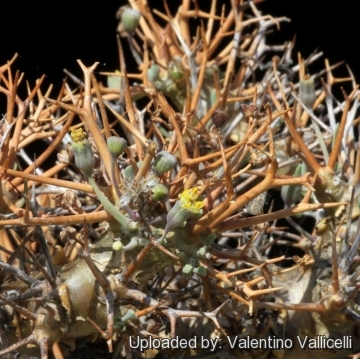 Othonna euphorbioides Photo by: Valentino Vallicelli
Othonna euphorbioides Photo by: Valentino Vallicelli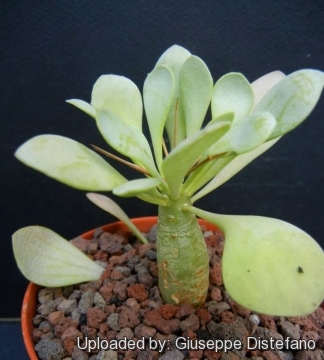 Othonna euphorbioides Photo by: Giuseppe Distefano
Othonna euphorbioides Photo by: Giuseppe Distefano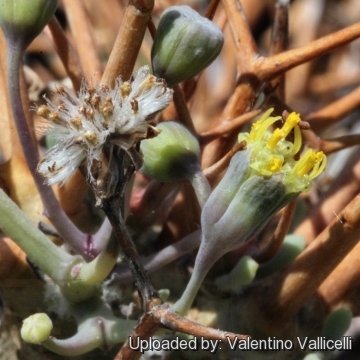 Othonna euphorbioides Photo by: Valentino Vallicelli
Othonna euphorbioides Photo by: Valentino Vallicelli Othonna euphorbioides Photo by: © Plantemania
Othonna euphorbioides Photo by: © Plantemania Othonna euphorbioides Photo by: Valentino Vallicelli
Othonna euphorbioides Photo by: Valentino VallicelliCultivation and Propagation: O. euphorbioides is one of the easier species to cultivate. They must be grown very hard in the nursery as close to the natural conditions as possible. This ensures that they keep their compact habit.
Your Photos

by Valentino Vallicelli

by Valentino Vallicelli

by Valentino Vallicelli
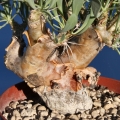
by Valentino Vallicelli






















